Now it’s personal.
The relationship between a brand and a customer is no longer only professional or transactional; it has become personal.
Every person representing the brand must know the customers, their likes, dislikes, and pain points, inside out.
It goes beyond a sales rep hiding behind the curtain and observing their buying patterns. It demands a detailed understanding of why customers make those choices.
For instance, 72% of consumers expect companies to understand how their needs and objectives change during times of disruption.
A customer profile makes it easy to document all observations plus insights from your experiences and customer data to create a repeatable and scalable business strategy.
Let’s look at what a customer profile is, how to build one, and tools that can help in the process.
What is a customer profile?
The customer profile or buyer persona is a document containing information about individual customers. It consists of age, gender, location, spending habits, and other details, helpful for determining the needs and preferences of target audiences. This information helps you perfect your sales pitch and marketing messages while being relevant to the buyers.
Customer profile data that is up-to-date and reliable is critical for business. It generally comprises of the following information:
- Demographic details such as age, marital status, gender, and so on.
- Geographical information includes nationality, race, state, city, and residence.
- Psychographics consists of habits, values, lifestyle, and interests.
- Socio-economic status, which classifies them into various categories of salary, education, and job.
If you’re wondering why it is necessary to create customer profiles, I’d like you to imagine the following scene.
The importance of creating customer profile
Say you’ve invited your partner’s friends to dinner at your home for the first time. You have no clue who eats what and, your partner blithely tells you her friends aren’t picky. You follow their words, and lo and behold, someone has a nut allergy, someone’s vegan, and someone is on a strict diet.
And your menu is none of those things. Oops.
We don’t want to make such mistakes when selling to consumers. We’d rather know what our consumers have in mind than blindly selling.
Customer profiling helps here.
- Demographic details give you insights into what product will and won’t work. For example, you can only sell a stroller to parents with infants.
- If you have geographical details, you’ll also know the weather and climate conditions. That is, if you sell umbrellas, people living in high rainfall areas will be more likely to buy them.
- It helps you hyper-personalize the product, making it one of a kind to the customer.
- You can price products according to the customer’s economic status. For instance, you can’t market expensive meals to broke college students when they can’t afford them.
- Finally, you can distinguish qualified leads for your business only when you create profiles.
Now let’s see the benefits of customer profile information.
Benefits of creating customer profiles
As we see, customer profiling helps you streamline your sales and marketing efforts. Instead of shooting in the dark, you’ll be approaching potential buyers wisely.
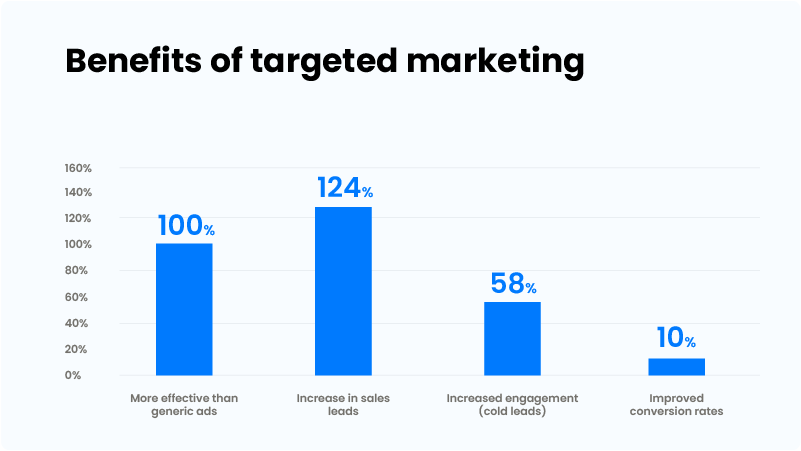
You can also use the customer profile information to:
- Devise scalable strategies. Prioritize campaigns for those who fit your Ideal Customer Profile (ICP).
- Create highly targeted marketing campaigns.
- Personalize your messaging.
- Explore the untapped market potential.
- Identify upselling and cross-selling opportunities
- Update and customize your offering as per market demands.
In short, customer profiling opens a lot of doors to explore customers, their needs, and more.
However, a lot of people confuse customer profile and ICP. Are they the same thing?
No.
Here’s why:
What’s the difference between a customer profile and an ideal customer profile (ICP)?
| Customer profile | ICP | |
| Goal | Identify buyers who might need your product/service | Identify who would benefit the most from your product or service. |
| Data involved | Market research, surveys, historical data from CRM to identify demographic, geographical, and firmographic details. | Analyze data from CRM, ERP, and other systems (e.g., predictive analytics) to identify firmographic, environmental and behavioral attributes. |
| Target audience | Total addressable market | Focuses on the most valuable customers and prospects that are also most likely to buy. |
| Expected outcome | More sales | Faster sales cycles, higher conversion rates, greater average customer lifetime value |
| Usability | Marketing, sales prospecting, UI/UX development | Account-based sales and marketing |
Now let’s look at the steps to create and use customer profile information.
7 Ways to create your first customer profile
1. Assess your target customers
To explain this concept, let me give you an example.
Not more than a decade ago, Canon was struggling to sell their low-range DC cameras.
“Consumers’ preferences and behaviors have shifted. They now prefer smartphones for capturing snapshots at the expense of digital cameras,” says Maggie Wong, director and general manager, Canon Hong Kong.
However, there was a window of opportunity.
Parents were reluctant to buy cell phones for their children as they didn’t want their children texting, talking, or using apps.
This psychographic information about buyers helped Canon realize the potential to sell digital cameras to kids.
They created a marketing strategy that tapped into children’s passion for photography. And within a year, they had a 40% share in the low-range digital camera industry.
So, follow these steps to assess your target customers.
- First, identify the people who have a practical use for your product. What does your product offer for its users? Who can overcome an issue using your product?
- Once you discover who benefits from your product, identify your regular customer’s lifestyle, demography, geography, and socioeconomic status.
- The final step is to discern what context your customers inhabit. Do they use your product to aid their business? Or does your product cater to fulfilling personal needs?
Remember that creating a customer profile is a collaborative process. That is, sales, marketing, customer support, and other teams must discuss their perception of customers. Also, when in doubt, don’t just assume. It’s better to over-communicate.
You can use tools like Mural or Airtable to collaborate effectively.
2. Track and map your customer journey
The next step is to track and map the lead-to-customer journey.
A customer journey map depicts a customer’s interactions with your company. These representations show how a client progresses through your sales funnel. Include all possible touchpoints in your customer journey map.
The idea is to get a sense of the behavioral pattern of your target customers. For instance, buying habits – do they decide instantly, or do they research thoroughly before buying. It will help you craft your sales enablement strategy.
Lead management or CRM tools are helpful to track the customer journey. They record all the interactions a client has with your brand and present them in an easy-to-understand fashion. Some of the tools that can help here are LeadSquared, Zoho, and Salesforce.
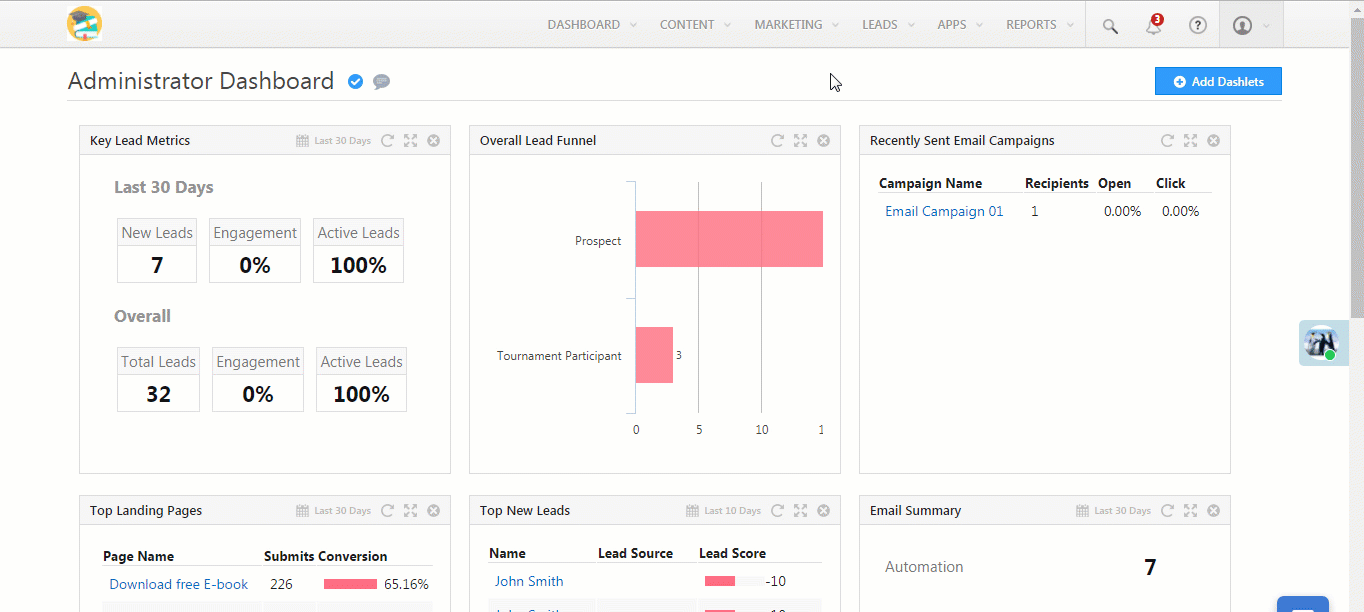
In case you’re thinking that tracking customer data is impossible, you’re possibly wrong.
87% of Americans are ready to have their activity tracked if:
- They can get better rewards in exchange for sharing information and
- Companies can personalize products to suit their preferences.
3. Choose criteria to qualify and score leads based on their profile.
70% of marketers say that improving lead quality is the foremost goal of their lead generation strategy.
You can use the customer profile information to improve leads quality.
Let’s take an example.
You own an e-commerce site where you sell various types of puzzles and board games.
Your ICP consists of an English-speaking, high-income family. Most of their traits relate to interest levels in games that cater to large groups of people.
So, you can filter your leads based on those specific traits. If you can only ship to specific regions, create a filter for that as well.
Also, whenever a lead fulfills a criterion, say they are English speakers, you can increase the score and prioritize them. The goal is to find people who are most likely to buy and to whom you can serve first.
You can use tools to automate the lead qualification process. Many CRM software tools (such as LeadSquared) provide lead qualification facilities.
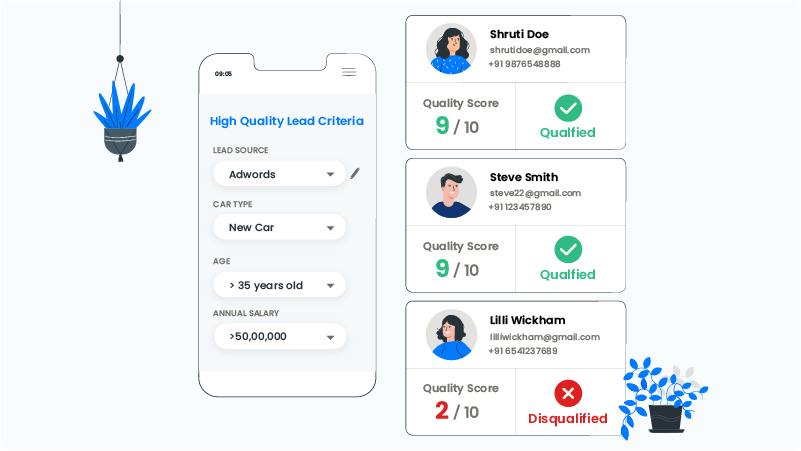
Thus, in this manner, you can use your customer profile to build a highly functional sales pipeline.
4. Get feedback and information directly from customers.
While inputs from your team members are inherent, you should not overlook customer perceptions.
Here’s one example.
In 2017, Spotify started crafting its listeners’ personas.
First, they analyzed the song preferences of the US audience but soon realized that this does not give the reasons behind those preferences. (Studying market)
So, they expanded their scope of study to include listeners of different ages, incomes, family types, lifestyles, music cultures, and more. (Studying behavioral and socio-economic patterns)
They noticed a consistent pattern in the listening habits of people. However, this data couldn’t reveal the value consumers saw in paying for the music.
So, in the next attempt, they interviewed people to understand if they could pay for music or not. (Customer interviews)
Rest is history.
Today, Spotify has 172 million paid subscribers worldwide.
And they achieved this by studying their customers thoroughly and by interviewing them.
You can read the full story here.
So, to understand what your customers want, the best way is to ask them. You can do it through:
1. Interviews
It will give you an in-depth understanding of what your customers are like.
While it’s okay to be candid with the customer, preparing a questionnaire will help you have a targeted conversation.
For example, you can prepare questions about their job responsibilities, challenges, etc.
2. Surveys
If interviews are much too expensive and time-consuming, surveys are the next best option. Customer feedback surveys are a quick and effective way to get inputs from your consumers.
All you have to do is request them to fill out a questionnaire and then review the findings. Both methods have their positives and negatives, and the best would be to try out both sources.
You can use the following survey tools.
5. Encourage reviews and engage with your customers on social media.
Customer reviews help get online traction. But they also serve as an excellent source of customer profile characteristics.
A review gives you insights primarily into customer experiences and satisfaction levels. Several reviews inform readers about the pros and cons of a product, which is also a source of feedback for your company.
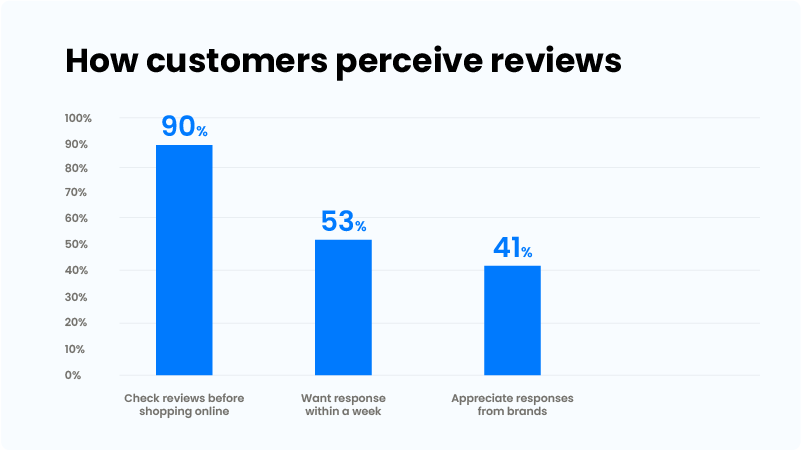
6. Make it easy to read and understand
There are two most popular formats for building customer profiles.
- The who (demographic information), what (their challenges and requirements), why (your differentiation from others and how you can address their pain points) format
- A brief biography or biodata format (describing all relevant characteristics of a customer)
For example, here’s a customer profile we’ve built recently.
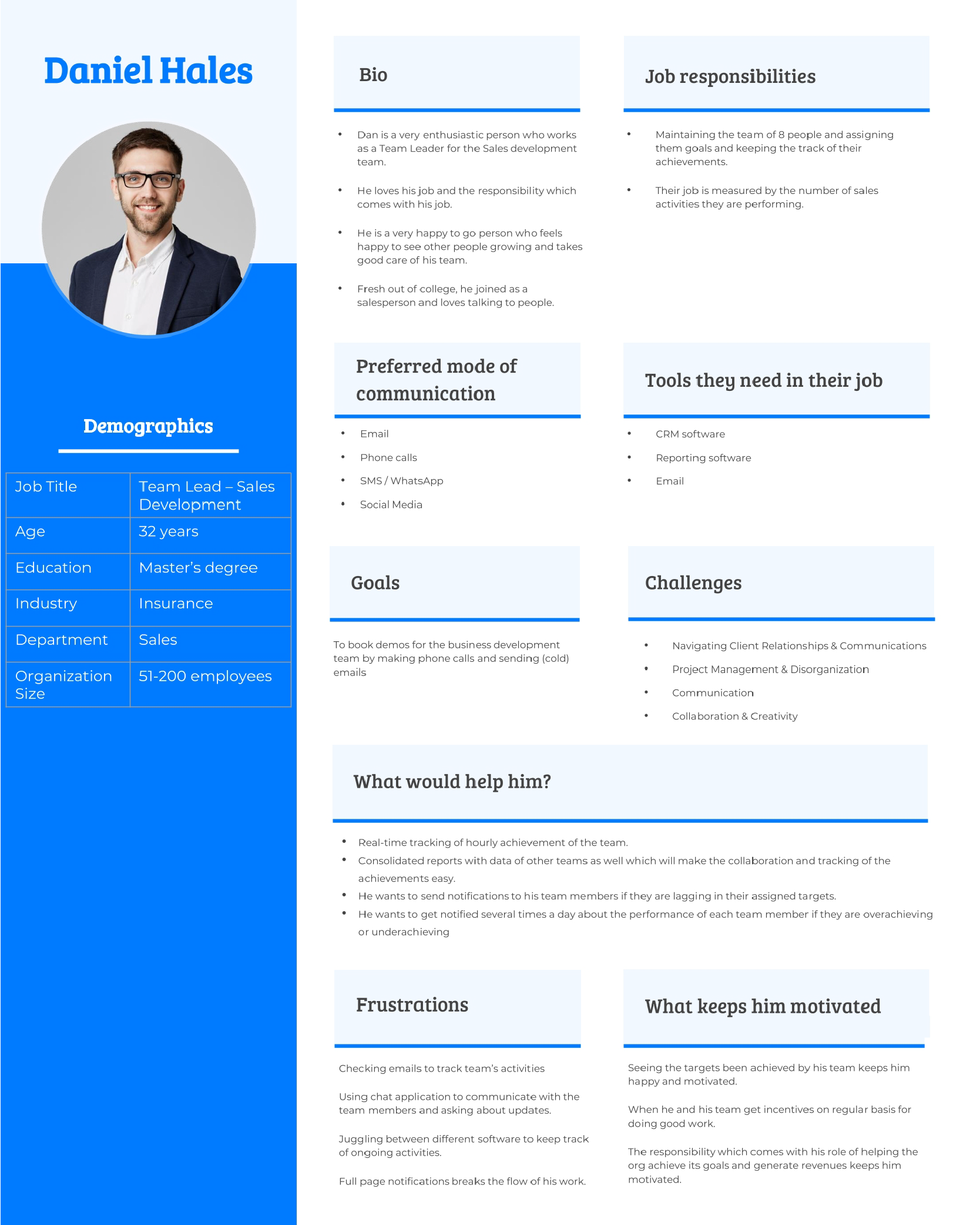
If you noticed, it puts together a complete picture of the customer in just a few words. That is, you can get a sense of their likes, interests, personal and professional life.
Don’t make your customer profile document text-heavy or theoretical. If it looks like a textbook, not everyone would like to read it. So, to make it easy to consume,
- Use pictures
- Use different font styles and colors
- Write short texts, preferably bullet points
There’s no hard and fast rule to add visuals. But putting a face to the profile makes it interesting to read and understand.
Also, since you’ll have to update the customer profile information frequently, keep an editable version handy.
You can use design collaboration tools like Canva to create interesting graphics and update them whenever needed.
HubSpot’s Make My Persona tool is also a great place to start building your customer profiles.
7. Update your customer profiles frequently
Your customer profiles will evolve as time goes by and improve in their accuracy.
Typically, brands update customer profiles when:
- They introduce new products or features
- Expand market reach across geographies
- They have to accommodate/manage changing customer preferences.
The first two scenarios are more operational, and you will automatically update your ICP.
But the third scenario requires behavioral reports and analytics to facilitate the updates. Without analytical tools, you won’t be able to figure out when your customer profile needs an update.
Customer profiling and updating customer profiles are far easier if you use CRM software. With this, you can get a 360-degree view of customers – from the first interaction to buying and retention.
However, a lot of us tend to get overwhelmed by the wealth of information we receive. On the opposite end of the spectrum, we might feel like we don’t know enough.
Don’t worry.
Anybody would feel that way in the beginning.
But it is also important to address challenges along the way.
Below are the problems you might face while creating customer profiles and their remedies.
Challenges when creating a customer profile
1. Unintentional biases
Customer profiles aren’t biographies written by your customer. The information you receive can end up stereotyping or grouping your customers.
For example, you may believe that only men buy some skilled sports equipment. But several women want to buy this equipment, and you’ll end up not selling to them.
Narrowing down customer profiles may end up feeding into negative stereotypes. So, when you view a profile, verify their level of interest first and don’t make any assumptions.
2. Data privacy
Data privacy is another challenging aspect of creating customer profiles. These concerns aren’t coming from a small group of people as:
- 79% of Americans worry about how businesses use their personal information.
- 84% of customers seek greater control in terms of how companies use their data.
Data security and privacy concerns are greater than ever. Creating customer profiles demand a level of personal information that may feel invasive. But this doesn’t mean customers aren’t willing to share information. Rather they prefer to know whether they can trust your brand with their data.
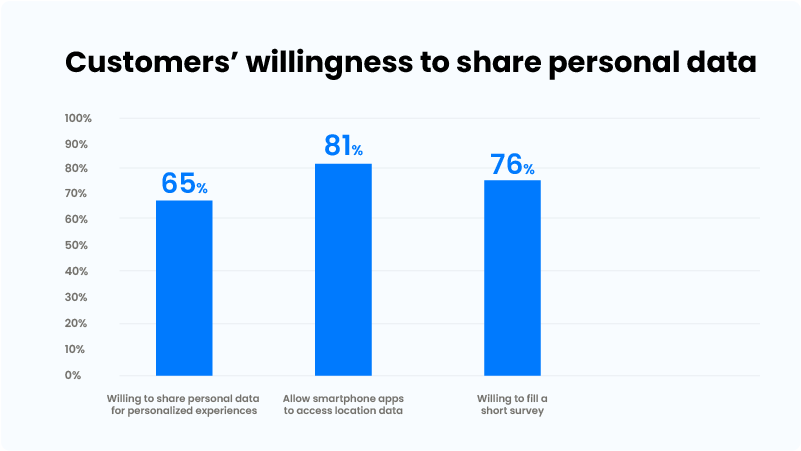
3. Ideal, but not ideal
Sometimes, we create a perfect customer profile, to only forget it exists.
For instance, we may come up with all the categories and segments we’re targeting. But salespeople may never make use of these data points because of slow implementation.
In another case, the ICP may be far too narrow for any actual person. So, your reps will discard the persona you painstakingly made.
That is why create an ideal persona who exists and share it across the board.
4. Misalignment
Lack of involvement of all departments that are part of the selling process may again lead to ineffective customer profiles.
For example, the sales team is bound to know more about who fits into your customer profile. And your customer service will know what changes customers want from products.
Your marketing team will help get information through campaigns. Finally, your product team will help personalize what your client wants.
If any of these teams fail to communicate with each other, you may face profound losses.
So, make the information accessible to all the relevant teams.
The bottom line
With most of the interactions between brands and customers happening digitally, it’s hard to stay in touch with customers in real-life.
That’s why building, updating, and using your customer profile info is crucial for your teams to deliver a consistent experience across channels.
You can fetch a big chunk of information for customer profiling from your CRM software itself and start making sense of the data. Try LeadSquared, a one-of-a-kind CRM software to track the entire customer journey with a real-time dashboard and automated report generator.
To help you get started with customer profiling, I have two useful resources for you.
Editable customer profile checklist and template
These are free, editable pdfs. You can use them whenever you need or create copies and share them with your colleagues and friends.
You can edit and use the customer profile template anytime you wish. Or, if you want to create your own design, you can follow the customer profile checklist to ensure that the information you plan to include covers everything.
If you need any further information/resources, feel free to write to us. :)









